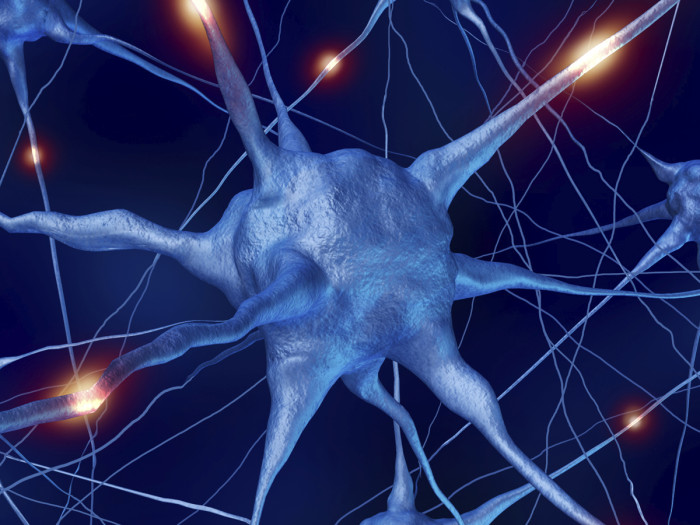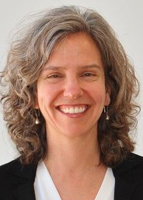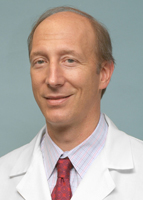Research center seeks broad solutions for neurological diseases
The Hope Center for Neurological Disorders explores common avenues of disease to develop and apply solutions broadly

At Washington University’s Hope Center for Neurological Disorders, researchers come together with a common purpose: to identify mechanisms of neurodegenerative disorders and to develop therapies to address them.
After 11 years in existence, the center’s 112 member investigators have uncovered molecular mechanisms of nerve fiber degeneration, identified genes that are risk factors for neurological disorders and determined biomarkers of Alzheimer’s disease. These investigators also have worked together to develop therapies that apply novel strategies, with the goal of slowing or stopping nerve cell degeneration and death. Taking the next step, Hope Center faculty and Washington University have allied with pharmaceutical companies to move therapies into clinical trials.
The center was founded in 2004 as a collaborative alliance between Washington University and a nonprofit organization known today as Hope Happens. Previously called ALS Hope, Hope Happens was started by an amyotrophic lateral sclerosis (ALS) patient, Chris Hobler, who later died of his disease, and his family. When Hope Happens and Washington University began to consider the possibility of an alliance, however, they decided that their focus should expand beyond ALS.

“We wanted to focus not on a single disease but on the mechanisms of neurodegeneration that are important in neurological disorders,” explains Anneliese Schaefer, JD, PhD, the Hope Center’s executive director. “We compare this to cancer. People understand that cancer is cells growing out of control regardless of what tissue is affected—the kidneys, the liver, etc. We look at it in a similar way for neurological disorders: Nerve cells have a certain genetic makeup, and there are only so many ways they can degenerate and die. The outcomes are just different for different diseases.”
Collaboration is key
A key feature of the Hope Center is collaboration. Each year the center holds a competition to award funding for pilot projects aiming to identify mechanisms of neurodegenerative diseases or develop therapies for those diseases. To be eligible for the funding, a team must consist of at least two laboratories genuinely working together—not just in name. The principal investigator must be a Hope Center member, but researchers from other labs do not need to be.
“Our model of promoting collaborative research is unusual,” Schaefer says. “We are out there promoting opportunities for scientists to find each other and learn about neurological disorders.”
This collaborative environment is evident in the Hope Center’s six research groups. The groups allow researchers to gather input and advice from their colleagues, to share data and to leverage research findings for insight into more than one disease. Within these research groups, data sharing occurs early rather than after publication.
“A mistaken assumption about scientists is that they don’t want to share their unpublished results. They do,” Schaefer says. “People want input, and they want help going forward. This model has worked really well here because Washington University is such a collaborative environment. We put our research groups out there under the moniker of what the subject matter is, and they are open to everyone.”
Though they are always evolving, the center’s current groups are: Axon Injury and Repair, Clocks and Sleep Club, Lysosome Processing and Transport, Neurogenetics, Neurovascular Injury and Repair, and Protein Aggregation and Neurodegeneration.
Similar to the research groups are the center’s PI Chalk Talks. Open only to Washington University faculty, these are presentations by researchers who are preparing grant proposals. They share their ideas and plans with the goal of receiving constructive comments from their peers.
The Hope Center also supports core facilities that are available to its members as well as to nonmembers both inside and outside Washington University. Any researcher who uses a core facility must pay a fee, but members receive a substantial subsidy toward that fee.
These facilities give researchers access to expensive equipment that would otherwise be cost-prohibitive.
“The core facilities are crucial,” Schaefer says. “Having done my PhD here, I can say that firsthand.”
The six core facilities are Alafi Neuroimaging, Animal Surgery, DNA/RNA Purification, In Vivo Microdialysis, Transgenic Vectors and Viral Vectors.

David Holtzman, MD, the Hope Center’s scientific director, notes that many of the center’s members are world leaders in their areas of expertise. In addition, several of their discoveries have moved into human studies involving novel diagnostic tests and treatments. These include treatments that decrease the expression of harmful proteins in diseases such as ALS and the use of antibodies that help clear toxic proteins in diseases such as Alzheimer’s and other brain disorders. And some of the new genes discovered in the Hope Center are being tested in people to determine their risk for various neurodegenerative diseases, Holtzman adds.
“I think the unique combination of basic science and translational research in our center combined with the multidisciplinary, interdepartmental nature of our membership and governance have worked to make this a very successful center. The Hope Center is already contributing importantly in the development of new treatments for many currently untreatable disorders,” Holtzman says.
For more about the Hope Center for Neurological Disorders, visit hopecenter.wustl.edu.






